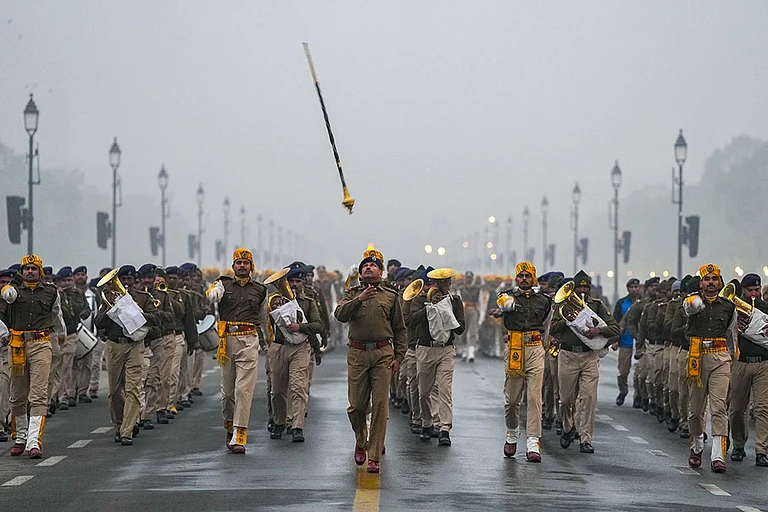With the first bloom of almond flowers in March, the spring ushers fresh life into Kashmir. If it were not for the memories of war and pain, there would be only song and dance.
One such memory is nearly two hundred years old that almost annihilated Kashmiris. On 16 March 1846 — the British Colonial Empire sold the whole of Jammu and Kashmir to Gulab Singh, one of the former military generals in the Sikh empire, under a treaty. It came to be known as the ‘Treaty of Amritsar’.
It was when Kashmiris remember that they were sold along with their families, fields, crops, mountains and rivers. They were, as renowned poet Sir Muhammad Iqbal lamented, sold “cheap”.
All about the ‘Treaty of Amritsar’
Following the first Anglo-Sikh war, Britishers, under a treaty with Dogra monarch Gulab Singh, sold Kashmir for 75 lakh rupees or Nanakshahi rupees.
Besides, under the treaty, Britishers had to be provided one horse, twelve shawl goats of approved breed (six male and six female) and three pairs of Kashmiri shawls annually.
Ahead of the treaty with Britishers, the forces of Sikh ruler Maharaja Ranjit Singh ran over the Kashmir Valley in 1819.
Subsequently, Ranjit Singh made his Dogra general Gulab Singh the ruler of Jammu. Later, Gulab Singh expanded the boundaries of his empire.
He first annexed Ladakh in the 1830s and later Baltistan (now in Pakistan) in the 1840s.
Ranjit Singh had also given Poonch in J&K to Dhyan Singh (Gulab Singh’s brother), as a jagir. Poonch was a separate state, different from Gulab Singh’s Jammu. However, Dhyan Singh faced a series of rebellions from his majority Muslim subjects.
On the other hand, the Valley remained with the Sikhs. That was until Maharaja Ranjit Singh’s death in 1839.
However, after the defeat in the Anglo-Sikh War, the Sikh Empire had to cede Kashmir to the Britishers through the Treaty of Lahore, signed on 9 March 1846.
Due to Gulab Singh’s neutrality during the Anglo-Sikh War, the British granted him dominion over Jammu and Kashmir through a sale deed, which was formalised through the Treaty of Amritsar.
The state of Jammu and Kashmir was thus formed, a Muslim-majority state with a Hindu Dogra ruler.
The last ruling Maharaja of the Dogra dynasty was Maharaja Hari Singh, the son of Raja Amar Singh Jamwal and the nephew of his predecessor in the Dogra dynasty, Maharaja Pratap Singh. Hari Singh acceded to India in 1947.
His son Karan Singh was ‘Sadr-e-Riyasat’ in erstwhile Jammu and Kashmir. Later, ‘Sadr-e-Riyasat’ was abrogated in 1953.
Kashmir after Treaty
Following the takeover of the Dogra regime in Kashmir, the region was pushed into the abyss. ‘Begaar’ or forced labour became a common practice, leaving the common masses devoid of any land. As feudalism thrived, commoners were battered by poverty.
The regime also imposed heavy taxes and their policies created communalisation in Kashmir, as observed by historians, that anyone other than native Muslims enjoyed state support.
With Indian Freedom Struggle gaining force in the entire sub-continent, the winds of political awakening also reached the vale of Kashmir. It was this wind that Kashmiri leaders like Sheikh Mohammad Abdullah and Chowdhary Ghulam Abbas sailed and began to undo what the Amritsar Treaty had led to.
Historian Mridu Rai, in her book ‘Hindu Rulers and Muslim Subjects’, notes that the interests of the vast majority of their Kashmiri Muslim subjects planted the seeds of a political movement that “remains in thrall to a religiosity thrust upon it for the past 150 years”.
After the uprising in 1931, in which nearly two dozen Kashmiris were killed, the Treaty of Amritsar was replaced with the ‘Instrument of Accession’ in 1947 but the “sale deed” and subsequent misgovernment still haunts Kashmir.


























